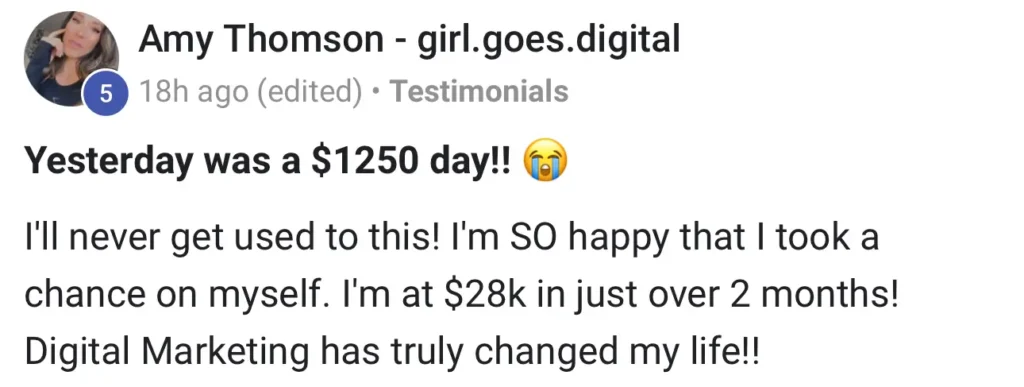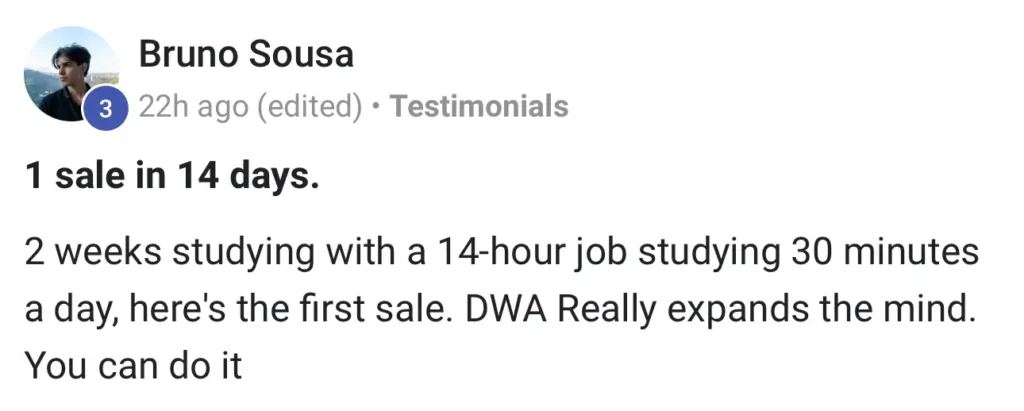Are you seeking to learn how to balance the relationship between money and happiness?
Ever wondered if cash really buys joy, or if that’s just a myth we keep repeating?
I dug into the best research so you don’t have to guess.

In 2010, Kahneman and Deaton found emotional well being rose with income up to about $75,000.
Later work by Killingsworth in 2021 used real time reports and saw gains beyond that mark.
Then a 2023 adversarial collaboration tied it together.
On average, well being nudges up with more pay.
But a smaller group hits a plateau near $100,000 while the happiest keep gaining above that.
I’ll show you the data, the methods, and the practical moves that actually shift mood and life quality.
Expect clear answers on who benefits most, why inequality matters, and how small changes at work or in spending can improve everyday well being.
If you want to truly connect money and happiness, it’s not just about earning more.
It’s about creating freedom, stability, and the ability to design a life you love.
But remember, as I always recommend…
Before making a decision, evaluate where to put your time and efforts based on what better aligns with your final objectives.
The most effective way I found to achieve both financial security and personal fulfillment was by learning a high income marketing skill through Digital Wealth Academy (DWA).
A complete system designed to help you build sustainable, scalable income online.
Here’s what’s inside:
- 52+ business and marketing modules so you can choose the skills and strategies that fit your goals
- A community of 124.8k active members to inspire, guide, and support you
- Weekly live support sessions and multilingual webinars with mentors who have been where you are
- The ability to create multiple business models and income streams for financial and lifestyle freedom
Some students have started seeing results in weeks, while others progress at their own pace.
Your outcome will depend on your effort and consistency.
From online entrepreneurship to digital services and content creation, DWA equips you to earn money in a way that supports the lifestyle, choices, and happiness you want.
Start Building Your Income and Happiness with DWA Today

a free beginner’s guide
DWA Sneak Peek
Learn the easiest and fastest way to start or exponentially grow your existing business.



Table of Contents
Key Takeaways
I summarize conflicting findings and present a single, evidence backed answer you can trust.
Average trends show gains with income, but subgroups vary.
Cash transfers raise well being, especially for lower earners.
I explain how to prioritize spending to buy happiness on purpose.
Practical tips for work and policy to reduce misery without overpromising.
Why the debate endures: what the latest research says about money and happiness
You can trace the debate through three landmark papers that each measured well being in unique ways.
From conflicting studies to consensus: a brief timeline (2010 → 2021 → 2023)
In 2010, Kahneman and Deaton found life evaluation rises with income while day to day emotional well being leveled off near $75,000.
In 2021, Killingsworth used app based, real time reports and saw experienced well being climb steadily with income.
No obvious ceiling.
Then in 2023, the authors teamed up.
Their paper showed both results were right once you looked inside the distribution.
On average, income relates to higher well being, but subgroups differ: an unhappy tail flattens near ~$100k while the happiest keep gaining above that.
What “happiness” means in the data: day to day affect vs. life evaluation
Key distinction: day to day affect measures how you feel moment to moment.
Life evaluation asks you to rate your whole life.
They don’t always move together.
“Refine the question, clarify the measure, and the findings line up rather than collide”.
- The timeline shows measurement choices drove conflicting headlines.
- The 2023 reanalysis reconciled methods by slicing the data differently.
The data behind the trend: methods, measures, and who was studied in the United States
Let’s look under the hood of the research to see how the numbers were collected and who showed up in the samples.
Momentary well being and the app
The Track Your Happiness app pinged people at random moments.
Each ping asked a simple question on an affect scale from “very good” to “very bad”.
Repeated reports from many participants give a clearer window into daily feelings than one off recall.
How income was modeled
Researchers analyzed incomes on a log scale.
That treats a $10k raise differently at low versus high earnings.
On average, the relationship looks log linear.
Reconciling datasets
The 2023 adversarial collaboration sliced the distribution by baseline mood.
It showed an unhappy subgroup’s relief rises steeply with income up to about $100,000, then plateaus.
The happiest subgroup keeps improving above that threshold.
| Method | Measure | Participants | Core finding |
|---|---|---|---|
| Experience sampling (app) | Momentary affect scale | US adults spanning broad incomes | Real time effect rises with income on average |
| Log income models | Logged income | Wide income range | Log linear association overall |
| Distributional slicing | Happiness subgroups | Subsamples by mood | Unhappy group plateaus near $100k. Happy group rises |
“Experience sampling minimizes memory bias and captures lived experience”.
A conflict resolved: how income relates to happiness across the spectrum
When you map outcomes across the whole income line, the apparent contradictions start to make sense.
I dug into the reanalyzed PNAS data.
On average, experienced wel being rises in a roughly log linear way as income grows.
Log linear gains for most, with a misery plateau near $100,000
The clean story is simple.
For the majority, each incremental increase brings modest gains.
No hard cap shows up for most people.
But beneath that trend, a different pattern lives.
A less happy subgroup gets big relief as income climbs up to about a $100k threshold.
Beyond that point, further raises stop reducing daily distress.
“What looked like a universal plateau was partly an artifact of how the affect scale tops out”.
- The paper shows that both patterns are real.
- Small raises matter most for easing misery at lower incomes.
- Higher earnings often buy peak experiences rather than further pain relief.
Bottom line: the relationship is unified by the data.
Different behaviors appear at different points on the scale, and the evidence supports targeted choices for policy and personal decisions.
Zooming in on the curve: unhappy minority, happy majority, and the $75k to $100k threshold
Here’s the granular view: not everyone tracks the same climb as income grows.
For the least happy, relief climbs up to about $100k, then flattens
In the reconciled PNAS analysis, the unhappiest respondents saw big gains in momentary well being as income rose.
That rise usually stops near the $100k mark.
Think of a person juggling bills and emergencies.
Each increase closes practical gaps.
After the threshold, the leftover misery no longer tracks pay.
For the happiest: gains accelerate past $100k
By contrast, the happiest subgroup doesn’t need firefighting cash.
Extra income amplifies peak experiences, autonomy, and options.
So above the threshold, increases often buy more intense moments rather than simple relief.
“This split explains why a single number could both confirm and contradict earlier claims”.
- The majority sit between these extremes and show steady gains across levels.
- A small raise at a lower income can erase chronic stress. A similar raise at high income buys memorable experiences.
- Use the curve as a guide: under $100k, prioritize raises that remove friction. Above it, focus on time, meaning, and relationships.
Beyond income: inequality, wealth, and causal evidence on buying happiness
When inequality grows, the stakes around pay and life satisfaction shift fast.
How rising gaps change the link
Cross national work shows the income well being tie has strengthened in the U.S. and much of Europe since the 1970s.
In years or places with higher inequality, pay predicts well being more strongly.
That hurts the poorest most.
Income versus wealth: which matters more?
Assets minus debt often track life satisfaction better than a single year of earnings.
Among millionaires, earned wealth beats inherited wealth in predicting satisfaction.
“Randomized cash transfers and UBI trials show cash causally raises well being, especially for those with scarce resources”.
| Factor | Core effect | Who benefits most |
|---|---|---|
| Income (annual) | Steady association with momentary well being | Broad groups. Log linear gains |
| Wealth (assets − debt) | Stronger tie to life satisfaction | Those with cushions and liquidity |
| Cash transfers / UBI | Causal increases in well being | Lower resource individuals show the largest gains |
- Inequality changes the math: each extra dollar matters more at the bottom.
- Policy options like debt relief and savings boosts can outsize gains in well being.
- So whether cash helps depends on context: the gap, the buffer, and what the next dollar fixes.
Practical implications: how people and employers can spend money to boost well being
Here’s how real people and smart employers can turn pay into better days.
I’ll keep it simple and practical.
Spend on experiences, give to others, and buy time.
Research shows trips, classes, and small acts of generosity beat more stuff for lasting joy.
Try a tiny test this week: spend $5 on someone else and watch your mood by the end of the day.
It’s a cheap experiment with a clear signal.
If bills are biting, stabilize first.
An emergency fund often yields the largest daily relief.
Financial stress cuts productivity.
About 1.5 lost workdays per employee yearly, so fixing basics helps everyone.
- Buy time: outsource chores you hate and reinvest hours into people or hobbies.
- Employers: pay fairly and add tools like auto savings, coaching, and debt help.
- Use budgets for meaningful team experiences. Learning, retreats, volunteer days, rather than one off perks.
“Ask two questions before you spend: will this save time or deepen a relationship? If yes, green light”.
For raises, tie growth to clear goals so the gain feels earned and seen.
Small, repeated choices beat rare flashy buys.
Over the long run, that’s the clearest way to buy happiness with purpose.
Conclusion
Here’s the short, evidence backed conclusion you can actually use today.
On average, experienced happiness rises with income in a roughly log linear way.
The unhappiest participants gain until about $100,000, then flatten.
The happiest keep improving past that point.
This article‘s findings mean practical choices win.
For people under strain, extra pay removes pain.
For others, pay unlocks richer peaks in life.
Use the takeaway as a plain way to act: stabilize basics, buy time, and fund relationships.
Employers should design pay and benefits that help individuals across levels.
I’ll leave you with two quick questions: what small next step raises your well being, and how will you repeat it?
Keep testing.
The research will evolve, and so will you.
Real Life Results: Explore More DWA Testimonials
Discover how Digital Wealth Academy is changing lives.
Read authentic success stories and see the incredible results members are achieving with the DWA program.



FAQ
What does recent research say about the link between money and happiness?
Studies show the relationship is nuanced. On average, higher income correlates with greater life evaluation and fewer daily negative emotions up to a point. Researchers find log linear gains for many people, with the biggest reductions in misery occurring as income rises toward roughly $75k to $100k. Above that range, benefits often slow for those starting from low well being but can continue for already happy individuals.
How do studies measure “happiness” in these papers?
Researchers use two main lenses: momentary affect (day to day feelings captured by apps and experience sampling) and life evaluation (global judgments like the Cantril ladder). Momentary measures detect daily mood swings. Life evaluation captures overall satisfaction. Both matter because income relates differently to each.
Who was studied in the U.S. datasets researchers reference?
Samples range from nationally representative surveys to app users who track momentary well being. Many analyses combine census style income data with experience sampling from thousands of participants. That mix helps cover both broad demographics and real time emotional patterns.
What are momentary well being scales, and how reliable are they?
Momentary scales ask people to report feelings in the moment. Stress, joy, and sadness, often experienced via apps or short surveys. They’re reliable for capturing daily affect and are closely related to situational factors. When aggregated across many entries, they give robust insight into how financial changes affect daily life.
Is there a clear income threshold where benefits stop?
There’s no single universal cutoff, but multiple analyses point to diminishing returns around $75k to $100k for reducing negative affect in many people. That threshold varies by region, cost of living, family needs, and personal baseline well being.
Why do some datasets show ongoing gains above six figures while others show a plateau?
It depends on who’s in the sample and which outcome is measured. For life evaluation and for people already reporting high well being, extra income can boost satisfaction more. For the least happy, extra income often mainly cuts down negative experiences and tends to level off near the $100k mark.
How does inequality affect the income well being relationship?
Rising inequality tends to strengthen the link between income and well being. When gaps widen, relative position and social comparison matter more, so earnings shifts can have larger emotional effects across communities.
Are assets and debt better predictors of life satisfaction than annual earnings?
Sometimes. Wealth: savings, property, investments minus debt, captures long term security and can predict life evaluation better than flow income alone. Debt and low net assets often undermine the positive effects of income on well being.
Can spending money strategically buy greater well being?
Yes. Evidence shows spending on experiences, social connections, time saving services, and gifts for others often yields bigger boosts than pure material purchases. Employers can boost workforce well being by investing in flexible schedules, mental health benefits, and meaningful perks.
What research designs help reconcile conflicting findings across studies?
Adversarial collaboration and cross dataset synthesis are effective. Teams pool diverse samples, harmonize measures (momentary vs. evaluative), and test for subgroup differences. That approach reveals how patterns change by baseline happiness, income distribution, and measurement method.
How should individuals interpret the $75k to $100k guidance for their own lives?
Treat it as a rough benchmark, not a rule. Your cost of living, family needs, debt, and values matter more. If you’re struggling, income increases up to that range often reduces daily stress. If you’re comfortable, consider spending on experiences, security, and relationships for the biggest gains.
What practical steps can employers take to improve staff well being based on this evidence?
Focus on predictable schedules, fair pay, health benefits, paid leave, and options that buy employees time. Perks that reduce daily friction, like commuting support, childcare, mental health access, often raise both satisfaction and productivity more than one off bonuses.

